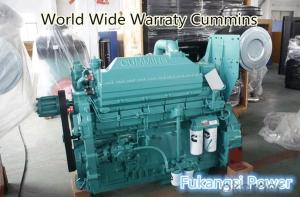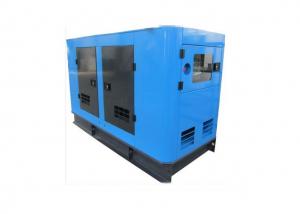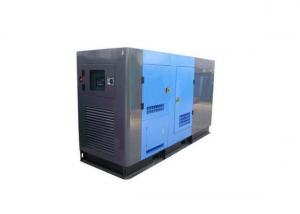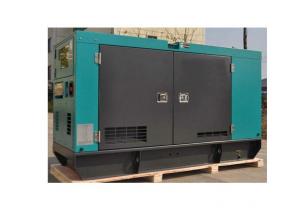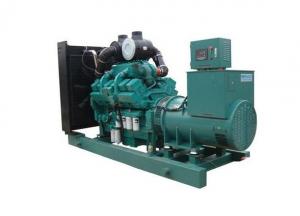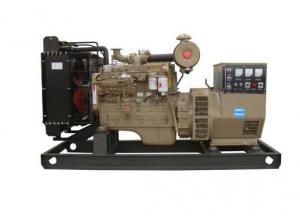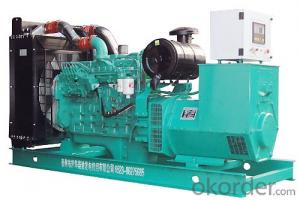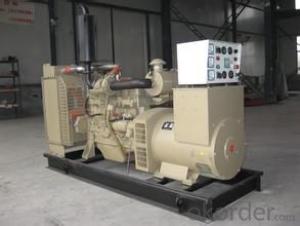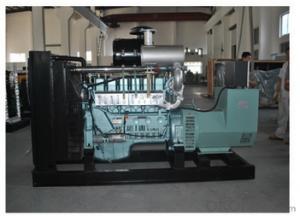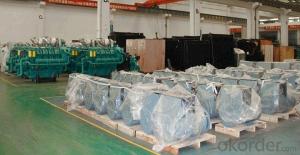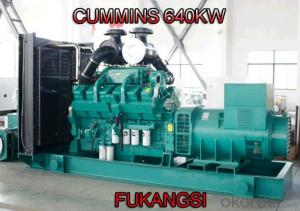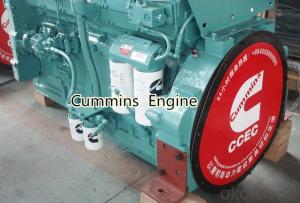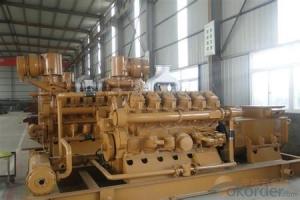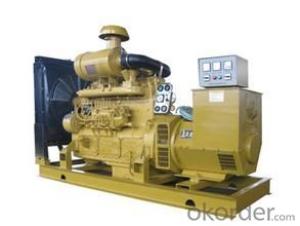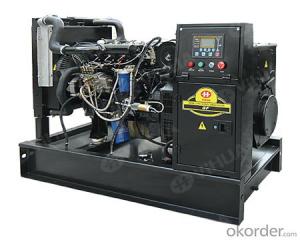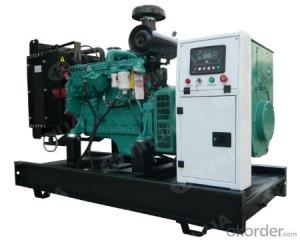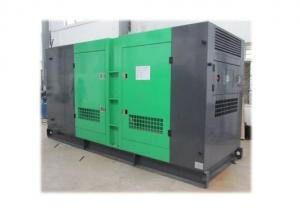Product list of China Lovol Engine type (lovol)104
- Loading Port:
- Shanghai
- Payment Terms:
- TT OR LC
- Min Order Qty:
- 1 set
- Supply Capability:
- 5000 set/month
OKorder Service Pledge
Quality Product, Order Online Tracking, Timely Delivery
OKorder Financial Service
Credit Rating, Credit Services, Credit Purchasing
You Might Also Like
Specifications
This Generator powered lovol
| Model | Prime Power (KW) | Standby Power (KW) | Engine Model | Engine Power |
| FKS-L22 | 20 | 22 | 1003G1A | 26/29 |
| FKS-L27 | 25 | 27 | 1003G | 28/31 |
| FKS-L35 | 32 | 35 | 1003TG1A | 38/42 |
| FKS-L42 | 38 | 42 | 1003TG | 44/48 |
| FKS-L35 | 32 | 35 | 1004G | 40/44 |
| FKS-L50 | 45 | 50 | 1004TG1A | 52/57 |
| FKS-L55 | 50 | 55 | 1004TG | 65.7/72 |
| FKS-L82 | 75 | 82 | 1006TG1A | 84.3/93 |
| FKS-L85 | 78 | 85 | 1006TG3A | 86/95 |
| FKS-L90 | 80 | 90 | 1006TG2A | 92.3/102 |
| FKS-L100 | 90 | 100 | 1006TAG1A | 108/119 |
| FKS-L120 | 110 | 120 | 1006TAG | 121/133 |
- Q: if a diesel generator(say of negligible mass) is used to power an electric car powered by an electirc motor how efficient will it be when compared to a car that uses an i.c engine thats uses diesel directly?
- Most Efficient Diesel Generator
- Q: I could see how it could benefit certian classes of commercial trucks,heavy equitment;ect!but what about passanger cars though?
- Diesel -electric has long been used in trains, buses, ships, mine equipment. Diesel has 30% more energy per gallon over gasoline. Diesel is a by-product that is refined from trying to make gas from crude oil. Diesel can also be made from soy beans, coal oil, vegtable oils, used cooking oils. The new Blue tec diesel engines exhaust is even cleaner then the air that went into the air filter--(cleans the air as you drive). Diesel doesn't evaporate ,. The old vw rabbits use to get 48 mpg highway---that was 24 years ago, diesel engines have gotten cleaner and more powerful for their size. Generators normally never go above 3600 rpms. So the idea of a engine that has so many ways to make the fuel, fuel that has more energy per gallon, cleans the air as it drives, the engine has plenty of torque for it's size and weight---just makes scents to me that it would make a good hybrid
- Q: how much power do they require and how much room do they take up?
- If you are talking about the truck (traction) motors on a locomotive, then whole power system! diesel engine, generator, exciter generator, truck motors, can range anywhere from seven hundred horsepower for a switch engine up to several thousand horsepower for a line haul locomotive. The traction motors get their power from the generator which is connected to the diesel engine. There is no direct mechanical connection from the diesel engine to the wheels. All the diesel engine does is turn the generator. The power from the generator is what running the traction motors which in turn drives the wheels of the locomotive. That is where the term diesel over electric comes from. In short the diesel engine drives the generator. The power from the generator drives the traction motors. The traction motors drive the wheels. The wheels drive the locomotive. The amount of power the generator puts out is controlled by two things. How fast it is turning (number of RPM and how much excitation voltage it's fields are being excited with by the exciter generator. Both the RPM's and the excitation voltage is controlled by the engineer. The advantage of using diesel over electric is they can tandem several locomotives together to pull long trains and be able to control them all from the lead engine. (Locomotive) As far as size Look at the trucks on the locomotive. The area between the wheels is pretty muchly taken up by the traction motors. Here is another fact. The generator is a DC generator and the traction motors are DC motors. Most of the time they are series wound DC motors for better starting torque since they are always coupled to a load. Here is another fact from the been there done that file! Traction motors are nasty and dirty to work on like when you have to change brushes and seat the new brushes and horne the commutator
- Q: i have a 7.5 onam diesel generator that runs for 15 min and shuts down i get a code 33 (overheating)I change coolant,cap and thermostat also checked air flow Still no luck.any ideas anyone
- The onan fault code 33 is high engine coolant temperature fault
- Q: i have an amida lt5000 light tower/generator. its 22 hp, 120/240, 8.5 kw., 2 cylinder diesel motor, its pull behind type, its got 6 lights on the tower and stands up to like 40 feet. its got surface rust in some spots, its not the best looking but how much could i get 4 it? i cant find prices on OKorder or anything
- It would depend on who needs it. Check with any Rental places in your area that may have one. They may also be interested in buying it.
- Q: What are the materials used in diesel generators
- The motor is generally outside the copper core material it looks like is a kind of metal
- Q: Example 1:A GP38-2 has a 2000 HP prime mover diesel engine.What are the horsepower ratings of the electric motors geared to the axle? [4 electric motors; 1 on each axle how much HP?]Example 2:An SD38-2 has a 2000 HP prime mover diesel engine.What are the horsepower ratings of the electric motors geared to the axle? [6 electric motors; 1 on each axle how much HP?]I know the tractive effort of the SD unit would be higher, but with 2 more motors on the axles, does it have more horsepower also?
- The short answer is, the horsepower is fixed. That is determined by the diesel engine and that can't make more power, it is just divided either by 4 or 6. A 3000 HP GP 40 locomotive pulls considerably more amperage than a 3000 HP SD 40, same horsepower divided by fewer axles, which is of course why the 6 axle pulls so much better at extended low speeds than 4 axles. The total horsepower stays the same, at full throttle the prime mover cant make anymore, your GP-38 will not be able to make any more power than an SD-38, both 2000. Added: At full throttle the main generator is putting out all the power it can, there can be no more load on it, that is fixed, the variable is the number of axles. Avio's figure of 750 HP per axle is absolutely correct, But those 750 HP motors in a 3000 HP locomotive obviously are never making over 500 HP each, there isnt enough power available from the main generator. That is why those motors last so much longer and are able to pull heavier loads, they are never making their maximum power. The amps we see on our meter in a locomotive dash is measured at the number 1 traction motor, not the generator/alternator output. At 10 MPH under maximum throttle a 3000 HP SD-40 (6 axles) pulls around 900 to 1000 amps (per axle), at the same speed a 3000 HP GP-40 (4 axles) locomotive is pulling well over 1200, heat buildup is a factor, short time ratings are soon exceeded and wheel slip is uncontrollable. Good question.
- Q: I have to distinct between these generator. Do any website provide detail of all type of generator for purpose of study? My main intention is how to differentiate mobile generator from others.
- Terminology may vary between manufacturers or dealers, but here is how I interpret the differences. RV generator is mounted internally to the RV. Remote start, feeds power to selected RV circuits only. It is supplied fuel from the vehicle tank. Typically up to about 8kW.
- Q: I been thinking, and it seems to me our future vehicles would be best suited with a small 1~ liter diesel engine turning a generator to power 4 electric motors at the wheels of the car/truck, just like locomotives use. Advantages would be significantly increased fuel economy, AWD, no transmission and axle weight(offset by weight of batteries, longer lasting diesel engine, easier and cheaper to repair due to small engine size, fewer moving parts, and decreased complexity, regenerative braking, significantly reduced emmissions, less noise, no idling when not moving.Seems the advantages would vastly outweigh the disadvantagesDoes anyone build such a vehicle?
- Diesel would be a better alternative both in that high compression engines are more efficient though they also produce more nitrous oxides and diesels can run on biofuels more readily. However you have the problem that you would need a sophisticated computer controlled diesel to avoid the valve clatter while idle that turns a lot of people off. With a full hybrid, the clatter may be minimized but if you wanted the advanced engines, you would have to buy them from Mercedes or Volkswagon. Usually for kit cars, an industrial diesel motors are used ( these are motors designed to run cement mixers, tractors and other equipment ), but the result is a lot of clatter from the valves. Hub motors are in wide use, especially with hybrid buses but they have the down side of being unsprung weight so they severely hamper handling. Trying to do it without hub motors and you might as well go back to the central engine concept. Also the hub motors exist in bus sizes at the moment. Most regenerative braking options are electrical and can only recover a small portion of the power. The Urba-Electric of the 70's used a stepper motor controlled mechanical CVT between the motor and the wheel thereby having mechanical regenerative braking that had higher returns, unfortunately the commercial Electromatic transmission is no longer on the market and such industrial CVT's are limited in their power ratings as they usually used a rubber belt. Hybrids are interesting but they are inherently redundant. They're hardly the ecological salvation for the planet.
- Q: i could only find a weight on one website and it said around 8,000 lbs. This one is rusted out and were planning on taking it in for scrap normally we would cut it up and take it in but this thing is a monster im thinking about renting a flatbed if it is 8,000 it would be worth it. The cooling coil and somekind of box with all the controls has been removed but they probobly werent any more then 500 lbs
- That weight should be very close minus loss to rust. I would call a scrapyard first to get an idea of what they are paying, especially because part of it is a diesel engine and there are guidelines with some yards how they will accept machinery, such as clear of any fluids. The copper or aluminum wires and generator cores will probably be most valuable parts and might be worth removing and forgetting the rest depending on what the scrap yard says about the engine and rusted steel shell is worth. It will be a hard move, even for a flatbed truck because the little winch will have to pull that generator which is super heavy and dead weight. Final thing to look into is whether there is any value in any part of it. This is a very popular size generator and is still produced today except with Cummins diesel engine, maybe someone has an older one with same engine and their block is cracked!?
Send your message to us
Product list of China Lovol Engine type (lovol)104
- Loading Port:
- Shanghai
- Payment Terms:
- TT OR LC
- Min Order Qty:
- 1 set
- Supply Capability:
- 5000 set/month
OKorder Service Pledge
Quality Product, Order Online Tracking, Timely Delivery
OKorder Financial Service
Credit Rating, Credit Services, Credit Purchasing
Similar products
Hot products
Hot Searches
